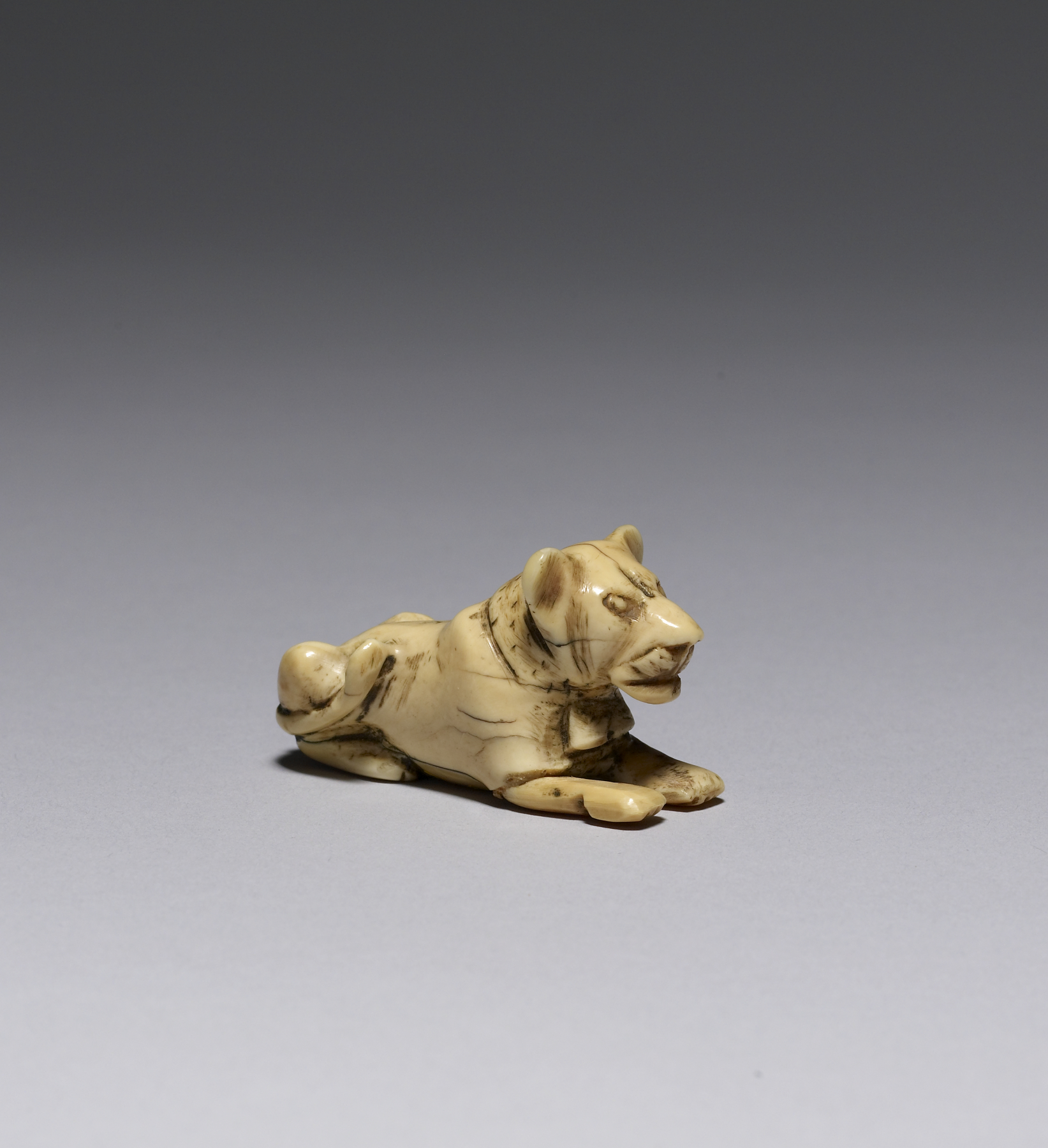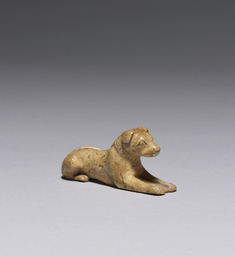Lioness Game Piece
(Ancient Egypt and Nubia )
Ivory was used, from predynastic times forward, to create luxurious practical objects such as combs, hair pins, amulets, spoons, and knife handles (Drenkhahn 1986). Around 3000-2900 BCE, a distinctive class of ivory objects--gaming pieces in the form of animals--emerged. These small statuettes represent recumbent lions (both male and female) and hounds. The broad collar and absence of a mane indicate that the subject of the piece illustrated here is a female lion; the rectangular pectoral on the figure's breast is the result of modern recarving, and the high polish was not original to the figure. Such a figurine was probably used in the game of "Mehen" ("coiled one"), played on a round board in the form of a coiled serpent with a trapeziodal projection. The game was popular until the end of the Old Kingdom.
Provenance
Provenance (from the French provenir, 'to come from/forth') is the chronology of the ownership, custody, or location of a historical object. Learn more about provenance at the Walters.
Arthur Sambon, Paris [date and mode of acquisition unknown]; Henry Walters, Baltimore, 1926 [mode of acquisition unknown]; Walters Art Museum, 1931, by bequest.
Exhibitions
| 1983-1984 | Ivory: The Sumptuous Art. The Walters Art Gallery, Baltimore. |
Conservation
| Date | Description | Narrative |
|---|---|---|
| 11/16/1982 | Treatment | cleaned; examined for condition |
| 8/18/1998 | Examination | survey |
Geographies
Egypt, El Balyana (Abydos) (Place of Origin)
Measurements
1 1/8 x 2 1/16 x 15/16 in. (2.9 x 5.24 x 2.35 cm)
Credit Line
Acquired by Henry Walters, 1926
Location in Museum
Accession Number
In libraries, galleries, museums, and archives, an accession number is a unique identifier assigned to each object in the collection.
In libraries, galleries, museums, and archives, an accession number is a unique identifier assigned to each object in the collection.
71.623



